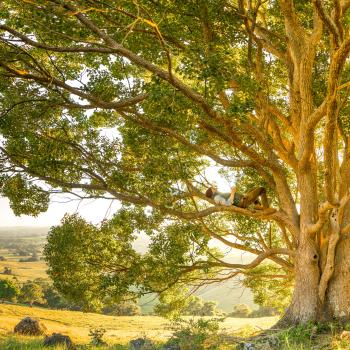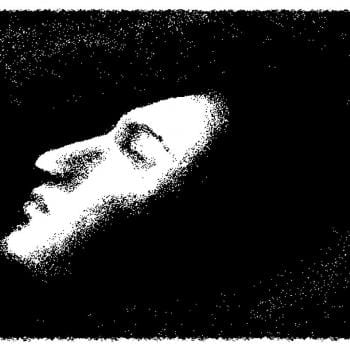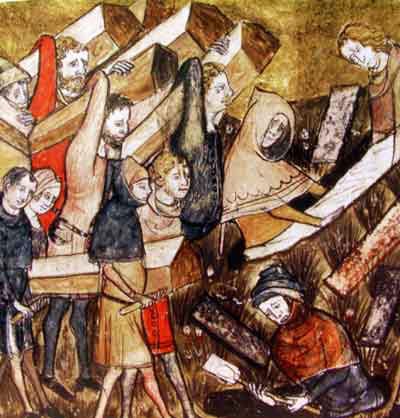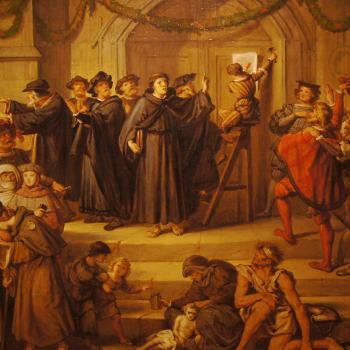- Trending:
- Olympics
- |
- Forgiveness
- |
- Resurrection
- |
- Joy
- |
- Afterlife
- |
- Trump
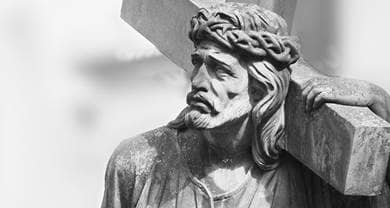
RELIGION LIBRARY
Christianity
Sacred Space
 The first Christians worshipped in the synagogue or in private homes. In 313, when Christians first received protection under Roman law, they adopted the building style of the Roman court of law. In western Europe, the rectangular Romanesque and medieval Gothic styles predominated until the Protestant Reformation, when the decorative interiors of many western churches were destroyed in order to simplify and brighten them. In the eastern Church, churches were built with square rather than rectangular proportions, and were topped by domes. Today, churches are built in a variety of architectural styles, using a wide range of materials. Specific styles are discussed in the articles on the different Christian traditions.
The first Christians worshipped in the synagogue or in private homes. In 313, when Christians first received protection under Roman law, they adopted the building style of the Roman court of law. In western Europe, the rectangular Romanesque and medieval Gothic styles predominated until the Protestant Reformation, when the decorative interiors of many western churches were destroyed in order to simplify and brighten them. In the eastern Church, churches were built with square rather than rectangular proportions, and were topped by domes. Today, churches are built in a variety of architectural styles, using a wide range of materials. Specific styles are discussed in the articles on the different Christian traditions.
 Early Christian worship in private homes required houses with at least one big room. To accommodate their growing size, a congregation would sometimes buy a house, owning it in common but registering the property in one person's name. This person was known as the custodian, or episcopus. The congregation would then convert the inside of the house into a large meeting room, thus creating "house churches," the first churches. To avoid persecution, early Christians attempted to keep the locations of house churches secret. When a congregation grew too large to meet in the church, they either split the congregation to meet in two separate places or met at some inconspicuous place outside the city.
Early Christian worship in private homes required houses with at least one big room. To accommodate their growing size, a congregation would sometimes buy a house, owning it in common but registering the property in one person's name. This person was known as the custodian, or episcopus. The congregation would then convert the inside of the house into a large meeting room, thus creating "house churches," the first churches. To avoid persecution, early Christians attempted to keep the locations of house churches secret. When a congregation grew too large to meet in the church, they either split the congregation to meet in two separate places or met at some inconspicuous place outside the city.
 Outside the city of Rome, Christians buried their dead in dug-out caves or underground cemeteries, called catacombs, which were sanctioned by the Roman authorities. A small group would assemble in the close confines of these catacombs for a burial or a remembrance of their dead.
Outside the city of Rome, Christians buried their dead in dug-out caves or underground cemeteries, called catacombs, which were sanctioned by the Roman authorities. A small group would assemble in the close confines of these catacombs for a burial or a remembrance of their dead.
When the Roman Emperor Constantine issued the Edict of Toleration in 313, Christians were no longer in peril from persecution and began to build large stone churches in the same architectural style as the Roman basilica or town hall.  The basilica had a rectangular shape, with an apse at the far end where the chairman and the council sat. In the early churches, the bishop sat on a chair in the center of the apse, flanked by presbyters and deacons, facing west toward the congregation. The bishop's chair was called a kathedra, the Greek word for seat and the origin of "cathedral," the name of the bishop's church.
The basilica had a rectangular shape, with an apse at the far end where the chairman and the council sat. In the early churches, the bishop sat on a chair in the center of the apse, flanked by presbyters and deacons, facing west toward the congregation. The bishop's chair was called a kathedra, the Greek word for seat and the origin of "cathedral," the name of the bishop's church.
 Since the Christians continued the Jewish practice of reading and explaining scripture, they soon arranged a raised platform, a pulpit, so that people could better hear the speaker. On another platform stood the bishop's seat, and in front of that, a wooden dining table to hold the bread and wine for the Eucharist. This table came to be called an altar, from the Latin altare, a reminder of the Jewish altar on which sacrifices were offered. The altar became the symbol of Christ, the sacred space in the church that was the center of attention and action.
Since the Christians continued the Jewish practice of reading and explaining scripture, they soon arranged a raised platform, a pulpit, so that people could better hear the speaker. On another platform stood the bishop's seat, and in front of that, a wooden dining table to hold the bread and wine for the Eucharist. This table came to be called an altar, from the Latin altare, a reminder of the Jewish altar on which sacrifices were offered. The altar became the symbol of Christ, the sacred space in the church that was the center of attention and action.
 Sometimes two arms were added to the basic rectangle of the basilica, one on each side of the end where the apse was located. This allowed more people to be able to view the altar and gave the building the shape of the Latin cross, which has three short upper parts and a long lower part. Because of its Roman origins, this style of church architecture came to be known as Romanesque, and predominated in the West until the 12th century.
Sometimes two arms were added to the basic rectangle of the basilica, one on each side of the end where the apse was located. This allowed more people to be able to view the altar and gave the building the shape of the Latin cross, which has three short upper parts and a long lower part. Because of its Roman origins, this style of church architecture came to be known as Romanesque, and predominated in the West until the 12th century.
 Like the Roman Church, the Eastern Orthodox Church built basilicas, but also developed a square-shaped church covered by a large dome, in the style of the Pantheon in Rome. Eventually four domed arms were added to allow more people inside and to provide better support for the roof. The four arms gave the building the shape of the Greek cross, in which all parts are the same length.
Like the Roman Church, the Eastern Orthodox Church built basilicas, but also developed a square-shaped church covered by a large dome, in the style of the Pantheon in Rome. Eventually four domed arms were added to allow more people inside and to provide better support for the roof. The four arms gave the building the shape of the Greek cross, in which all parts are the same length.
 In these early churches, window openings were small to keep the walls strong enough to support the roof. The interiors were often dark and candles were used for lighting. Sometime in the 12th century in the West, there developed a new style of architecture that employed innovative external stone supports, called flying buttresses,
In these early churches, window openings were small to keep the walls strong enough to support the roof. The interiors were often dark and candles were used for lighting. Sometime in the 12th century in the West, there developed a new style of architecture that employed innovative external stone supports, called flying buttresses,  allowing large windows of colored glass to be installed in the walls. The oldest known church in this Gothic style, the cathedral of Saint Denis near Paris, demonstrates an interior lit with daylight.
allowing large windows of colored glass to be installed in the walls. The oldest known church in this Gothic style, the cathedral of Saint Denis near Paris, demonstrates an interior lit with daylight.
Emerging from Judaism as it did, Christianity customarily frowned on the making of images or likenesses. As the church attracted increasing numbers of non-Jewish converts, congregants brought pictures into the churches.  The Western church quickly adopted the statues, frescoes, mosaics, and pictures of Jesus that grew in popularity. The Eastern Church largely avoided statues, but embraced frescoes, mosaics, and icons. Statues decorated the interiors and exteriors of churches, and in Gothic churches, stained glass depicted scenes from the Old and New Testaments.
The Western church quickly adopted the statues, frescoes, mosaics, and pictures of Jesus that grew in popularity. The Eastern Church largely avoided statues, but embraced frescoes, mosaics, and icons. Statues decorated the interiors and exteriors of churches, and in Gothic churches, stained glass depicted scenes from the Old and New Testaments.
 Committed to a focus on the preaching of the word of God and desiring to remove what they considered to be distractions from hearing this word, some Protestant reformers stripped church interiors of decoration, including paintings, statues, furniture, and stained glass. They sometimes rearranged the interior of the church, moving the pulpit to the center, or arranging the pulpit, altar, and baptismal font together at the eastern end. This allowed all present to hear and see everything and focus on the word of God. The plain walls and plain glass in the windows brightened the interiors of these churches.
Committed to a focus on the preaching of the word of God and desiring to remove what they considered to be distractions from hearing this word, some Protestant reformers stripped church interiors of decoration, including paintings, statues, furniture, and stained glass. They sometimes rearranged the interior of the church, moving the pulpit to the center, or arranging the pulpit, altar, and baptismal font together at the eastern end. This allowed all present to hear and see everything and focus on the word of God. The plain walls and plain glass in the windows brightened the interiors of these churches.
Modern Christians in the West, particularly in the United States, have a wide range of architectural styles to choose from. Relatively new building materials such as steel beams, reinforced concrete, and large structural glass panels allow architects to experiment with design. Notable examples are the Crystal Cathedral in southern California and the Catholic Cathedral of Saint Mary in San Francisco. Some congregations meet in ordinary locations like office buildings or storefronts, and many Christians still meet in homes, much as the early Christians did.


Study Questions:
1. Describe the first churches. How were they managed? Why were they secretive?
2. How did the pulpit and altar develop?
3. How do Christian churches differ in architecture to Eastern Orthodox churches?
4. Why did many Christian churches choose to move away from iconography?


